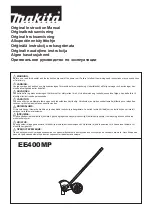
Safety
1-4
Asphyxiation
Compressed gases pose an asphyxiation risk. A leak can gradually displace the
oxygen in a closed room. And because helium, neon, krypton, and nitrogen are
colorless and odorless, the people in the room may not notice the leak before the
oxygen level becomes dangerously low. For this reason you must carefully leak-test
all gas connections after performing bottle exchanges or other gas system
maintenance, and correct any gas leaks before you use the system.
Fluorine Toxicity
Fluorine gas is especially hazardous because it is toxic and corrosive. It is the most
chemically active nonmetallic element and the most electronegative of all the
elements. Exposure to even a moderate concentration of fluorine can cause severe
burns to the skin, eyes, and internal tissues such as the mouth, throat, stomach, and
lungs.
WARNING!
Fluorine, even in small amounts, can hurt you seriously.
Prolonged exposure to small amounts of fluorine can cause respiratory disorders and
other health problems. Fluorine has a strong, distinct odor that the nose can detect in
concentrations as small as several parts per billion (ppb). Electronic fluorine sensors
are only sensitive to a fraction of a part per million (ppm). The fluorine gas used with
the laser system is diluted to five percent fluorine in helium or neon, which reduces
the safety hazards associated with its use.
Gas leaks in the laser system can come from three sources: the laser, the gas cylinders,
and the gas delivery system. The laser enclosure helps contain any gas leaks that
might occur within the laser gas system. Exhaust gases from the laser are processed
with an activated carbon scrubber (an electrostatic gas particle precipitation unit). The
scrubber traps the laser gas fluorine component, preventing the release of fluorine
into the cabinet ventilation system. Proper laser and gas system installation includes
providing a ventilation system that adequately exhausts both the laser enclosure and
the fluorine gas cabinet.
In case of a large fluorine leak, a qualified technician must
immediately
correct it by:
❑
Closing the fluorine cylinder valve
❑
Evacuating people from the laser room
❑
Using the ventilation system to clear the room of toxic gases
If personnel must enter the room while hazardous gases are present, they must be
fully qualified to operate in such an environment, and they must wear appropriate
breathing equipment and protective clothing.
While sophisticated electronic safety systems can reduce the hazards of using fluorine
gas, no such system is foolproof. Therefore:
❑
All personnel involved in using and maintaining the gas delivery system must
receive thorough training in gas safety for both inert and toxic gases.
❑
Personnel must understand and strictly follow proper procedures for gas system
use and maintenance.
❑
Two persons must be present during gas system maintenance to prevent
procedural errors.
!
Содержание IX-6168-PS
Страница 1: ...IX 6168 PS Laser Micromachining System Hardware Reference Guide...
Страница 26: ...Safety 1 20...
Страница 32: ...System Overview 2 6...
Страница 40: ...Starting and Shutting Down 3 8...
Страница 66: ...Pneumatic Components 6 10...
Страница 88: ...Electronic and Computer Components 7 22...
Страница 108: ...Ventilation and Debris Control 10 6...











































